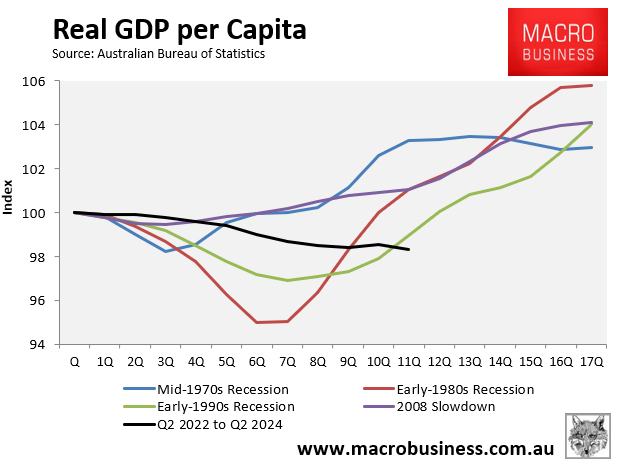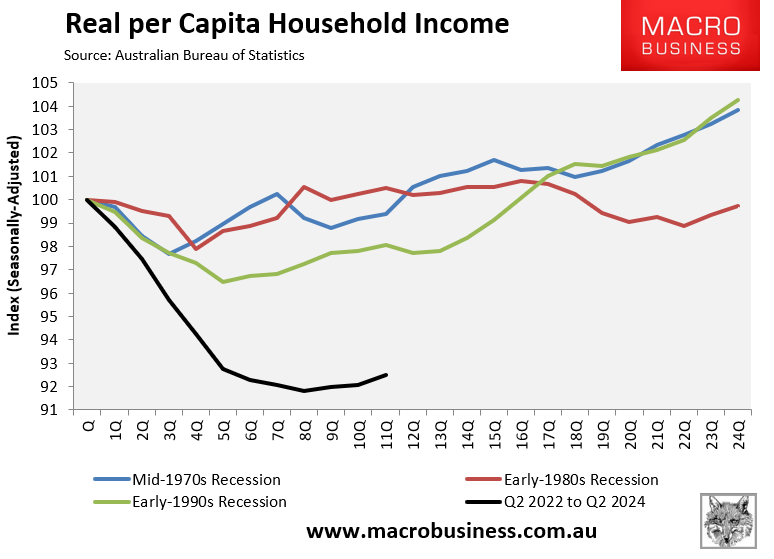Last week’s Q1 national accounts release from the Australian Bureau of Statistics (ABS) showed that real per capita GDP fell by 0.2%. This represented the ninth decline in per capita GDP in eleven quarters.

The following chart plots the current decline in real per capita GDP against prior episodes dating back to the beginning of the modern national accounts in the early 1970s:

As you can see, the current decline in per capita GDP, which has lasted eleven quarters, is the longest in modern recorded history.
However, the current decline in real per capita GDP of 1.7% is not the deepest. The early-1980s (-5.0%) and early-1990s (-3.1%) declines were far deeper but also recovered more quickly.
In this sense, the early-1980s and early-1990s recessions were “V-shaped” or “U-shaped”, whereas the current recession is ongoing.
One positive from the Q2 national accounts release is that real per capita household disposable income has finally begun rebounding.
After falling by a record 8.2% over eight quarters, real per capita household disposable incomes have risen by 0.7% from their trough to be down 7.5% from their peak:

The current decline in real per capita household incomes dwarfs the declines experienced in prior recessions dating back to the 1970s.
The drawn-out nature of Australia’s current per capita recession and the prospect of a slow rebound are why I have labelled the 2020s a “lost decade” for Australians.

